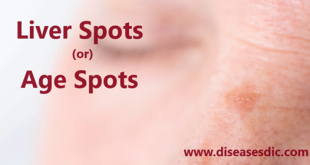Lymphedema: Description
Lymphoedema is a long-term (chronic) condition that causes swelling in the body’s tissues. It can affect any part of the body but usually develops in the arms or legs. Lymphedema develops when the lymphatic system doesn’t work properly. The lymphatic system is a network of channels and glands throughout the body that helps fight infection and remove excess fluid. It’s important that lymphoedema is identified and treated as soon as possible. If it isn’t treated, it can get worse.
Types of Lymphedema
There are two types of lymphedema – primary lymphedema and secondary lymphedema. Both types relate to lymph vessels or lymph nodes that are missing, damaged, removed or otherwise impaired.
Primary Lymphedema
Primary lymphedema occurs when the lymph system is damaged due to a developmental defect. Primary lymphedema can be classified according to the age of onset.
- Congenital: The lymphedema is noticeable at birth
- Praecox: Lymphedema occurs after birth, but before age 35
- Tardum: Lymphedema presents after age 35
Primary lymphedema can present as a variety of abnormalities:
- Lymphatic Aplasia: Rare condition where portions of the lymph system never develop and are missing
- Lymphatic Hypoplasia: This is the most common malformation, and refers to incomplete development of lymph vessels and/or nodes. The number of lymph vessels and/or nodes is reduced, or they can be smaller than normal.
- Lymphatic Hyperplasia: Structural malformation of lymph vessels and/or nodes with enlarged dilated lymph vessels which can cause malfunction of lymph valves and compromise lymphatic flow.
Secondary Lymphedema
Secondary lymphedema occurs due to an outside factor damaging or impairing the lymph system. Causes of secondary lymphedema include:
- Cancer surgery/radiation: Removal of lymph nodes from cancer surgery disrupts lymph flow. Radiation treatment can damage the fragile lymphatic vessels and cause lymphedema.
- Tumors: Tumors can grow and press on the lymph vessels, blocking flow and causing lymphedema. Tumors often cause lymphedema which differs in that it starts in the upper part of the limb. Other causes of lymphedema usually result in swelling that starts in the lower parts of the limb first.
- Trauma: Injury to the body can damage fragile lymphatics and lead to the development of lymphedema.
- Infection: Infections can cause inflammation and permanent damage to the fragile lymphatic vessels.
- Chronic Venous Insufficiency: Severe chronic venous insufficiency can overwhelm the lymphatics, leading to the development of phlebolymphedema (a venous disease with secondary lymphedema). Often the CVI is exacerbated by other medical conditions. Phlebolymphedema can develop in patients with normal lymphatics, or in patients with damaged lymphatics. Contributing factors include heart failure, renal failure, liver disease, untreated sleep apnea, obesity, paralysis/paresis, pulmonary hypertension, and certain medications.
- Obesity: Obesity is an independent risk factor for lymphedema, particularly in cancer survivors. Morbidly obese patients with a BMI > 59 are high risk for spontaneous development of lower limb lymphedema.
- Filariasis: A parasitic disease that is found mostly in third-world countries and impairs the lymphatic system. It is the most common cause of lymphedema worldwide.
Pathophysiology
In a diseased state, the lymphatic transport capacity is reduced. Consequently, the normal volume of interstitial fluid formation exceeds the rate of lymphatic return, resulting in the stagnation of high-molecular-weight proteins in the interstitium. This usually occurs after the flow has been reduced by 80% or more. The result, as compared with forms of edema that have much lower concentrations of protein, is high-protein edema, or lymphedema, with protein concentrations of 1.0-5.5 g/mL. This high oncotic pressure in the interstitium favors the accumulation of additional water.
Accumulation of interstitial fluid leads to massive dilatation of the remaining outflow tracts and valvular incompetence that causes a reversal of flow from subcutaneous tissues into the dermal plexus. The lymphatic walls undergo fibrosis, and fibrinoid thrombi accumulate within the lumen, obliterating much of the remaining lymph channels. Spontaneous lymphovenous shunts may form. Lymph nodes harden and shrink, losing their normal architecture.
In the interstitium, protein and fluid accumulation initiates a marked inflammatory reaction. Macrophage activity is increased, resulting in the destruction of elastic fibers and production of fibrosclerotic tissue. Fibroblasts migrate into the interstitium and deposit collagen. The result of this inflammatory reaction is a change from the initial pitting edema to the brawny nonpitting edema characteristic of lymphedema. Consequently, local immunologic surveillance is suppressed, and chronic infections, as well as malignant degeneration to lymphangiosarcoma, may occur
What causes Lymphedema?
If your lymphatic system is damaged or a blockage exists, the fluid can build up in the soft tissue beneath your skin.
There are two types of lymphedema:
Secondary lymphedema is caused by another condition or disease that damages your lymph vessels or nodes. Secondary lymphedema may be caused by:
- An infection in your lymph nodes
- Parasites
- Cancer or radiation treatment for cancer
- Surgery
- Lymph node removal
- Injury
Primary lymphedema is much less common. It’s a genetic problem that happens because your lymph nodes or vessels either aren’t adequately developed or are missing altogether.
What are the risks to cause Lymphedema?
Risk factors for lymphedema include:
- Having more lymph nodes removed: Research shows that having more underarm lymph nodes removed increases lymphedema risk.
- Having multiple surgeries to the chest, or more extensive surgery: It’s thought that the more surgical procedures you’ve had to the chest — whether to treat the breast cancer or some other unrelated condition, or to reconstruct the breast — the greater the chance of disruption to the lymphatic system and the greater the lymphedema risk.
- Radiation therapy: The greater the area of the chest and/or underarm that needs to be treated with radiation, the greater the risk. Radiation directly to the underarm area, where lymph nodes are clustered, tends to be associated with the highest risk.
- Chemotherapy: Research has not yet determined whether chemotherapy itself increases lymphedema risk. However, we know that chemotherapy sometimes leads to weight gain, which is a risk factor.
- Being overweight or obese: People who are overweight or obese are more likely to develop lymphedema after breast cancer treatment.
- Infection or injury affecting the arm, hand, or upper body on the same side of the body as your surgery: Infection and injury can lead to inflammation of the body’s tissues, which in turn makes the lymphatic system work harder. When an area of the body is inflamed, blood flow increases and so does the fluid load. If your lymphatic system can’t keep up, this can trigger lymphedema.
Clinical presentations of Lymphedema
If lymphedema does develop, it’s important to recognize it early so you can start treatment right away.
Common signs and symptoms you should watch for include:
- Swelling
- Part of your body (like your arm, leg, belly, or genitals) feeling full or heavy
- Skin changing texture, feeling tight or hard or looking red
- New aching, tingling, numbness, or other discomforts in the area
- Less movement or flexibility in nearby joints (like your hand, wrist, or ankle) or your eyelid(s), throat, or lips
- Trouble fitting into clothes in one area, such as a sleeve, pant leg, or shoe being tight
- Collars, rings, watches, and/or bracelets feeling tight even though you haven’t gained weight
At first, the skin usually stays soft, and raising the affected body part might relieve the swelling. But over time, the swollen area may become hot and red and the skin hard and stiff. If untreated, movement and use of the affected part may become limited.
What will be the effects after Lymphedema?
Lymphedema is a health condition with a number of distressing symptoms, in addition to several complications that may affect some patients. These include cellulitis, musculoskeletal pain, psychological stress and an increased risk of malignancy.
Each of these complications can be managed or prevented with different techniques, as outlined in more detail below.
Cellulitis
Cellulitis is a bacterial infection of the dermis and subcutaneous tissues underneath the skin and is the most common complication associated with lymphedema. It can both cause and result from lymphedema and may cause repeated episodes of discomfort, referred to as erysipelas, in individuals with the health condition.
Musculoskeletal Pain
It is common for people with chronic lymphedema to suffer from secondary musculoskeletal problems as a result of the condition, such as back and joint pain. This discomfort can lead to a reduction in the patient’s quality of life. Often excess weight is involved as a causative factor for musculoskeletal complications.
Psychological Distress
Lymphedema is a chronic condition that has a significant effect on the physical appearance of the individual. This can make an impact on the self-confidence of the individual and may affect the relationships they have with others and lead to periods of depression. It is important for patients with lymphedema to be aware of this risk and have a strong support network to reach out to when feeling down.
Malignancy Risk
Rare cases have been reported of cutaneous malignancy associated with lymphedema. This is thought to arise as a result of altered immune surveillance in the area affected by lymphedema. Lymphangiosarcoma is the most common form of cancer linked to the disease but other cases have also been reported, including basal cell carcinoma, squamous cell carcinoma, lymphoma, malignancy melanoma, and Kaposi’s sarcoma.
How do you Diagnose Lymphedema?
When lymphedema is in the advanced stage, the diagnosis is accurate due to the clear clinical symptoms involved. In the early phases of the disease, due to intermittent edema or swelling, it is difficult to establish the diagnosis of lymphedema. The basic diagnostic process involves a medical examination, imaging of the lymph vessels and nodes, imaging of the soft tissues, measuring the changes in electric conductance, measurement of the volume of edema, genetic tests, and imaging of the blood vessels.
Medical Examination
A family health care provider examines the patient with suspected lymphedema. The history of the patient includes the location of the swelling, the cause of the swelling, the age of the patient, pain, medications that may cause the swelling, family history, among others.
Imaging
Indirect lymphangiography – This technique uses iodinated contrast materials that are water-soluble. They are introduced between the layers of the skin (intradermally) and can enter the lymphatic system. This technique is useful to visualize simple as well as complex cases of lymphedema. Xeroradiography and mammography films help in visualizing the lymphatic system.
Isotopic lymphoscintigraphy – This technique is the most reliable method to assess the integrity of the lymphatic system. It can also detect the peripheral lymphatic system, large lymph vessels, lymph nodes, and the main lymph vessels. However, it is unable to detect the internal transport vessels. Isotopic lymphoscintigraphy uses a radiolabelled tracer (e.g., 99mTc-rhenium sulfate) that is injected into the skin (intradermal or subdermal) between the digits (fingers or toes). A gamma camera helps to visualize the route of the tracer and the radiation can be quantified. Stress tests are suggested to obtain reliable results. This technique is used to detect primary lymphedema while it is not needed for secondary lymphedema when there is a clear diagnosis.
Contrast lymphography – This technique is being slowly replaced by lymphoscintigraphy. Contrast lymphography, as the name suggests, makes use of an iodine-based contrast dye that is oil-based. The technique is used to visualize the structure of the lymphatic system before an individual goes in for reconstructive lymphatic surgery.
Other Tests – There are additional tests that are in use although they are not confirmed diagnostic techniques. For example:
Near Infra-Red Fluorescence Imaging (NIR) – Indocyanine green is introduced into the skin and the green dye is detected with an infrared fluorescence camera. It gives a real-time assessment of the lymphatic system including the small lymph vessels. Any potential swelling can also be detected, and hence, the condition can be identified at an extremely early stage.
Imaging of the Soft Tissues
Magnetic Resonance Imaging (MRI) – Limb edema can be diagnosed using MRI. Identification of the different types of lymphatic system obstruction in secondary lymphedema is made easier with MRI. Similarly, affected lymphatic trunks and lymph nodes can also be identified.
Computed tomography – This is another technique that is used to visualize the structure of the lymphatic system and to identify the location of the edema along with the typical thickening of the skin and a honeycomb pattern of the tissue. One of the uses of computed tomography (CT) is to monitor the effect of therapy on an area affected by lymphedema.
Ultrasound – In order to avoid an invasive assessment of the lymphatic system, ultrasound can be used to detect any thickening of the lymphatic tissue. The frequency used for detection is 20 MHz. Ultrasound can be used to assess the condition of the lymphatic system before treatment and it can also be used to monitor the benefits of therapy on the lymphatic system.
Test
Electrical Conductance: Electrical conductance is used to measure the water content in the body. However, it cannot distinguish other edemas from lymphedema.
Measurement of Volume: This technique has been in use for many years where the volume within a swollen arm or leg is measured. This technique can confirm the presence of lymphedema.
Genetic Tests: These tests are useful for patients who have primary lymphedema. The tests can reveal the type of chromosome affected. For example, the FLT4 gene in Milroy’s disease.
Treatment and Medications
Lymphedema is incurable. However, treatment can help reduce swelling and pain.
Complex decongestive therapy (CDT): This starts with an intensive therapy phase, during which the patient receives daily treatment and training. This is followed by the maintenance phase when the patient is encouraged to take over their own care using techniques that they have been taught.
The four components of CDT are:
- Remedial exercises: These are light exercises aimed at encouraging the movement of the lymph fluid out of the limb.
- Skincare: Good skin care reduces the risks of skin infections, such as cellulitis.
- Manual lymphatic drainage (MLD): The lymphedema therapist uses special massage techniques to move fluid into working lymph nodes, where they are drained. The lymphedema therapist also teaches several massage techniques that can be used during the maintenance phase.
- Multilayer lymphedema bandaging (MLLB): Muscles surrounding lymph vessels and nodes move the fluid through the lymphatic system.
Unlike the circulation of blood, there is no central pump (heart). The aim is to use bandages and compression garments to support the muscles and encourage them to move fluid out of the affected body part. Patients will also be taught how to apply their own bandages and compression garments correctly so that MLLB can continue during the maintenance period. A range of compression stockings is available for purchase online.
Surgery has historically had disappointing results compared with non-surgical therapies for lymphedema. However, a new surgical technique using liposuction has proved more successful. It removes fat from the affected limb, resulting in less swelling.
How to Prevent Lymphedema?
If you have had or you are going to have cancer surgery, ask your doctor whether your procedure will involve your lymph nodes or lymph vessels. Ask if your radiation treatment will be aimed at lymph nodes, so you’ll be aware of the possible risks.
To reduce your risk of lymphedema, try to:
- Protect your arm or leg. Avoid injury to your affected limb. Cuts, scrapes, and burns can invite infection. Protect yourself from sharp objects. For example, shave with an electric razor, wear gloves when you garden or cook, and use a thimble when you sew. If possible, avoid medical procedures, such as blood draws and vaccinations, in your affected limb.
- Rest your arm or leg while recovering. After cancer treatment, exercise and stretching are encouraged. But avoid strenuous activity until you’ve recovered from surgery or radiation.
- Avoid heat on your arm or leg. Don’t apply ice or heat, such as with a heating pad, to your affected limb. Also, protect your affected limb from extreme cold.
- Elevate your arm or leg. Whenever possible, elevate your affected limb above the level of your heart.
- Avoid tight clothing. Avoid anything that could constrict your arm or leg, such as tightfitting clothing and, in the case of your arm, blood pressure cuffs. Ask that your blood pressure is taken in your other arm.
- Keep your arm or leg clean. Make skin and nail care high priorities. Inspect the skin on your arm or leg daily, watching for changes or breaks in your skin that could lead to infection. Don’t go barefoot.
 Diseases Treatments Dictionary This is complete solution to read all diseases treatments Which covers Prevention, Causes, Symptoms, Medical Terms, Drugs, Prescription, Natural Remedies with cures and Treatments. Most of the common diseases were listed in names, split with categories.
Diseases Treatments Dictionary This is complete solution to read all diseases treatments Which covers Prevention, Causes, Symptoms, Medical Terms, Drugs, Prescription, Natural Remedies with cures and Treatments. Most of the common diseases were listed in names, split with categories.








Thanks doctor.
my case is I feel much pain when I walk or work a lot. the whole leg & the thighs are abit swollen.
what could that be?
Please consult a doctor as soon as possible.
my father having progressive swelling on both leg .he dont have any injury kidny function ,liver function is normal . hypertenseive heart disease shown by report. do you think its more sodium in blood cause water retaing
If you often eat meals that are high in salt, such as many processed foods, your body may retain water. The most common advice for reducing water retention is to decrease sodium intake.
It is seven months after I had chemotherapy and radiation for breast cancer. My feet are painful, have needle like pains and heavy.
Consult your doctor for appropriate diagnosis and treatment.
Need advise on treatment.
Please consult a doctor to get treated from Lymphedema.
hey please help me…my left feet some times get swollen!! i have never been in surgery!! and i have no injury on it!! what’s the problem do i have??? i feel much pain when i walk!! the right one is not swollen but it hurts me too!! this is temporally!! i get better,and after some hours it appear!! am good in the morning,the after noon i get swollen!! help me please
Please consult a doctor for a preliminary diagnosis of the problem.
Thank you for this information. I understand much better than before. I have Lymphodema. I’ve been through therapy. It’s back much worse now. It’s embarrassing and painful. I need help. Can’t do it alone. Any suggestions are appreciated.
Please consult a doctor for appropriate prescription.
thank you for the information I have been asking and no one had any thing
that that could give me. I felt alone,thank you .
Hi,I need help,my left leg is swollen,especially the ankle,,it does not pain,,what can be the solution ?
Please consult an orthopaedist and diagnose the defects in leg.
n